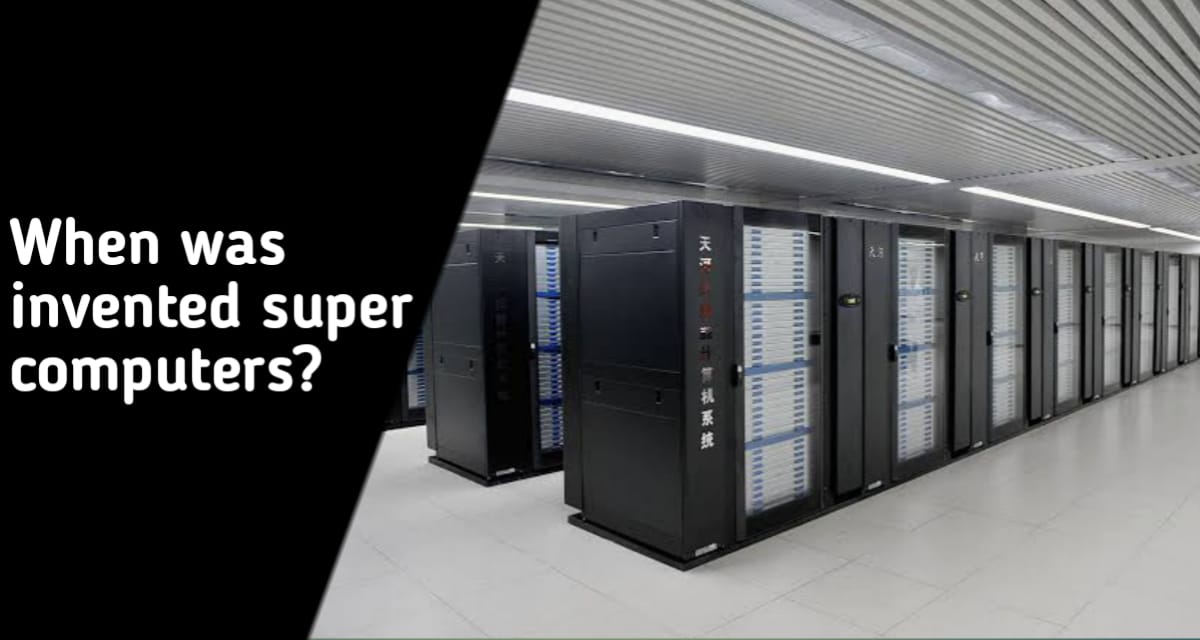When were invented supercomputers?
Computers have come a long way since they were first invented in the 1940s. Today, we have supercomputers that can perform millions of calculations per second! But how did these machines evolve and when was the first one invented? In this article, we explore the history of supercomputers and their invention.

The earliest supercomputers were built in the 1950s
The earliest supercomputers were built in the 1960s. At that time, computers were mainly used for scientific and mathematical calculations. However, scientists soon realized that they could use computers to improve the performance of other machines.
One of the first applications of supercomputers was in missile guidance systems. Scientists found that they could use them to calculate the trajectories of missiles more accurately. This allowed them to hit their targets with greater accuracy.
Supercomputers also played a major role in the development of artificial intelligence (AI). Researchers found that they could use them to create computer models that could mimic human intelligence. This process is known as machine learning.
Today, supercomputers are used for a wide range of applications, including medical research, climate change predictions, and financial analysis. They are also used in various industries, such as manufacturing, retail, and transportation.
Modularity was introduced to supercomputers in the 1970s
Supercomputers are machines that are capable of performing complex calculations. They are used in a variety of industries, including science, engineering, and finance.
Supercomputers are widely used today because they are able to perform complex calculations quickly. In the early days of supercomputers, they were almost completely modularized. This means that the different parts of the computer could be replaced or upgraded as needed.
Modularity was introduced to supercomputers in the 1970s. At the time, it was seen as a way to improve their performance and lifespan. Today, most supercomputers are still modularized, although there have been modifications made to improve their performance.
Formal methods were first used to solve problems on supercomputers in the 1980s
Supercomputers have been around for more than 50 years, but it wasn’t until the 1960s that formal methods were first used to solve problems on these machines.
Formal methods are a way of solving problems that are based on mathematics and logic. These methods are used to solve problems that are too complex or difficult to be solved using traditional algebra and calculus.
The first supercomputer was built in 1962, and it was called the Atlas Computer. It was able to perform calculations at a rate of 1 million instructions per second. Today, the fastest supercomputer in the world is called the Titan II, and it can execute calculations at a rate of nearly 54 billion instructions per second.
Large-scale parallelism was made mainstream on supercomputers in the 1990s
In the early 1960s, scientists at the Lawrence Livermore National Laboratory (LLNL) developed a new type of computer that could run many tasks simultaneously. This machine, which they called a “supercomputer,” changed the way scientists operated and research was conducted.
Supercomputers are still used today for a variety of tasks, such as modeling and simulation, mathematical research, and chemical engineering. They are also used for a number of scientific studies, including climate change research.
Large-scale parallelism was made mainstream on supercomputers in the 1960s. This means that different parts of the computer can run simultaneously, which makes them faster and more efficient. Supercomputers are now available in almost every field of study, making them an invaluable tool for researchers.
High-performance computing emerged in the 2000s
High-performance computing emerged in the 1960s when scientists and engineers began to use massively parallel computers to solve complex problems. These computers could perform thousands of calculations simultaneously, making them ideal for tasks like climate research and nuclear weapons design.
Today, high-performance computing is used in a wide range of industries, from pharmaceutical research to financial analysis. It’s also crucial for the development of tomorrow’s technologies, like self-driving cars and artificial intelligence.
Thanks to advances in technology, high-performance computing is becoming more affordable every year. This means that more businesses and researchers can benefit from its powerful capabilities.
Moore’s Law is still a major factor in computer technology
Moore’s Law has been a major factor in computer technology for more than 50 years. The law states that the number of transistors on an integrated circuit (IC) will double every two years. This has led to massive increases in processing power and storage capacity.
History of Supercomputers
The history of supercomputers is long and complex. The first computers were built in the early 1950s, but it was not until the 1960s that they began to be used for scientific purposes. In 1969, a supercomputer named TX-2 was developed by Seymour Cray at the Computing Technologies Corporation
. This computer was able to perform 500 million arithmetic operations per second (500 MOPS). In 1971, a supercomputer called ENIAC was created at the University of Pennsylvania. This machine could compute at 2 million MOPS. By 1972, there were over 1,000 computers in use around the world, and their performance had increased tenfold.
In 1973, a new type of computer was developed called a microprocessor. This machine allowed for more powerful machines to be created and made it possible for individual users to have access to supercomputing resources. In 1976, IBM’s Deep Blue machine defeated Gary Kasparov, one of the world’s best chess players, using artificial intelligence (AI) technology. This event marked a turning point in the history of computing as it demonstrated that computers could be used for more than just basic calculations.
How Supercomputers Work
Supercomputers are expensive and fast machines that were invented in the 1960s. The first supercomputer was built in 1955, but it was not until the early 1960s that it became a common tool in scientific research. Two of the earliest supercomputers were the University of California’s SCIEN5 and the National Center for Supercomputing Applications’ CDC 6600.
The Future of Supercomputers
When was the first supercomputer invented? The answer to this question is a little fuzzy, but it is generally accepted that the first supercomputer was built in 1946. At the time, this machine was known as the “ENIAC” and it was able to perform calculations at a speed of 1 million operations per second!
Since then, supercomputers have become increasingly powerful and complex, with current models capable of performing billions of operations per second. So what will the future hold for these machines?
One potential future for supercomputers is in scientific research. Advanced mathematical and scientific models are often used to study extremely complex problems, and currently, there is not enough capacity available to carry out these studies on a wide scale. Supercomputers could play a major role in addressing this problem by providing researchers with faster and more efficient tools for carrying out their work.
Another potential application for supercomputers is in the field of artificial intelligence (AI). Currently, most AI applications are powered by large data sets and sophisticated mathematical models, and these systems are struggling to cope with increasing demands. Supercomputers could help to address this issue by providing AI systems with access to massive amounts of data.
Conclusion
The first computers were invented in the 1940s, but they did not become commercially available until the early 1960s. This is when large companies started to buy them and use them for scientific and military applications. By 1965, every major computer company had a supercomputer.

